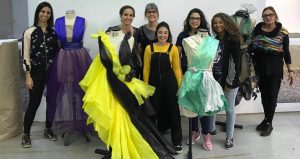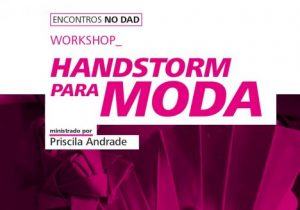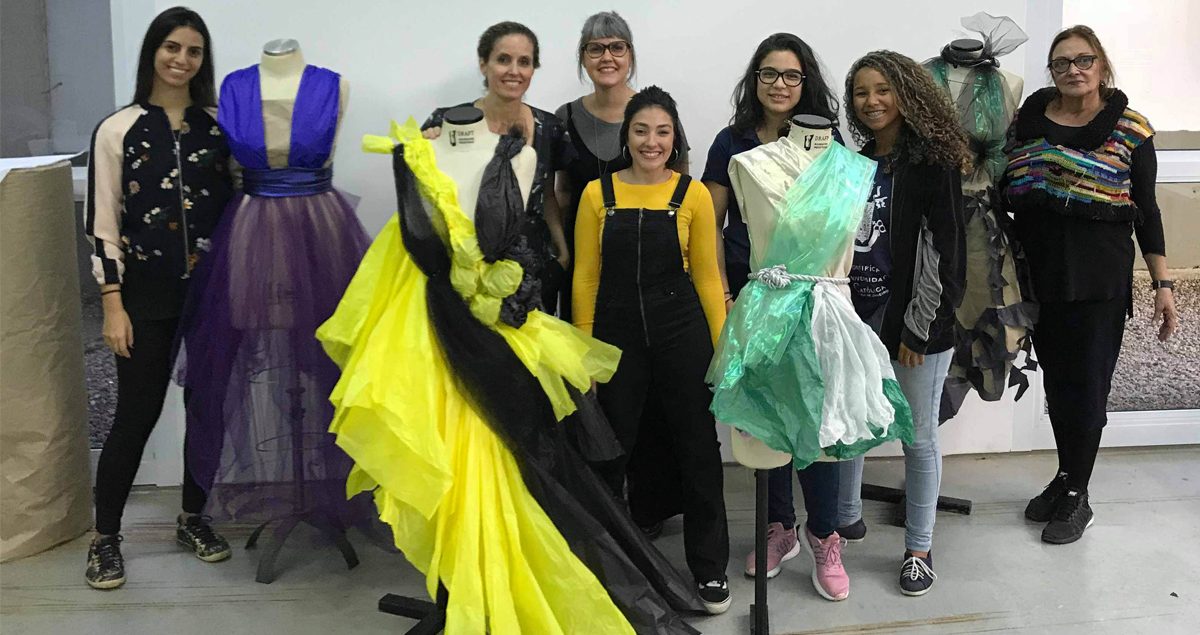In 2005, a preliminary version of the Handstorm design principles was published in a number of scientific articles. This was intended to invite future users to experiment with the principles. In this way feedback could be collected on the working of the principles.
A good example is SENAI CETIQT. During design sessions, some of the design principles were applied in a bachelor’s program for Fashion Design at the SENAI CETIQT in Rio de Janeiro, Brazil. The teachers of this course based their approach on the Handstorm approach and the effect measurement devised by Van Gassel (2005, 2016).
In a survey conducted after the course, the students gave the course a 3.75 on a scale of one to five. This means that the students were satisfied with the course. Initially there was resistance from the students, but this disappeared during the practice exercises. The teachers found that the results achieved using the design principles were better than the designs drawn on paper. Pinheiro and Queiroz (2013) concluded that three of the design principles outlined in these visual design meetings have probably led to better results than if these principles had not been used.
The Handstorm course is now being taught at this university. Frans van Gassel’s method has been adapted to the objectives of the Bachelor of Fashion Design. It is used by students for the development of various (clothing) collections. The students use the Handstorm approach to experiment with making garments. During this process of experimenting, the student gets the opportunity to explore possibilities in terms of structure, fabric, juxtaposition of elements, contrasts and compositions. This method has proven to be effective in discovering limitations and errors that would otherwise not be detected in the drawings and sketches of the garments.
In order to interest students in the Handstorm course, the workshop “Handstorm for fashion” was offered in advance. The workshop was led by Professor Priscila Andrade. During this workshop, the technique of three-dimensional experiments was taught using alternative materials (instead of making sketches on paper) as a basis for making metaphorical objects. The teacher asked participating students to bring scissors, pins and tape.

Workshop at Potifïcia Universidade Católica in Rio de Janeiro.

Márcia Bergmann followed the workshop “Handstorm for fashion” and used the Handstorm approach to perform a number of experiments. One of these experiments was based on the method of constructing metaphorical objects. The aim of the experiment was to investigate whether carpet waste could be used for clothing.

Results of the experiment involving the construction of metaphorical objects
Together with Cláudio Freitas de Magelhães, she wrote the scientific paper “Strategic design, sustainability and multiple approaches for textile experimentation”. This paper has been presented in November 2018 at the Global Fashion Conference (GFC) in London, England and published in the proceedings of the conference. Bergmann and Magelhaes (2018)
References
Bergmann, M., & Magelhaes, C. F. d. (2018). Strategic design sustainability and multiple approaches for textile experimentation. Paper presented at the Global Fashion Conference, London England.
Pinheiro, G. M., & Queiroz, M. d. (2013). Handstorm: uma prática para o design de moda / Handstorm: a fashion design practice. REDIGE, 4(1), 13 p. Retrieved from http://www.cetiqt.senai.br/ead/redige/index.php/redige/article/viewFile/172/230
Van Gassel, F. J. M. (2005). Experiences with collaborative design by constructing metaphoric objects. Paper presented at the Proceedings of the Symposium Design Research in the Netherlands 2005, 19-20 May 2005, Eindhoven University of Technology, The Netherlands, Eindhoven.
Van Gassel, F. J. M. (2016). Handstorm principles for creative and collaborative working. (Doctoral degree PhD Study), University of Technology Eindhoven, TU/e, The Netherlands, Eindhoven. Retrieved from https//dx.doi.org/10.6100/IR842445
